Audio interfaces have been around for a little over 20 years. Those of us who are lucky enough to have lived through other eras of music production have the ear to tell the difference between tape and digital and what it does with harmonic overtones and depth.
I’m going to go deep into the subject of audio interfaces and share with you all I’ve learned in these past 30 years of music production.
So, do audio interfaces make a difference?
Audio interfaces do make a difference in the resulting audio. The quality of the converters is paramount for the final sound to be closer to the original analog waveform. There are many tricks you can pull off to make it sound decent, but there are no shortcuts you can take to bypass low-quality converters. Audio interfaces are the heart of every modern home recording studio, and you should think of them exactly like that. The better they are, the better your productions will sound.
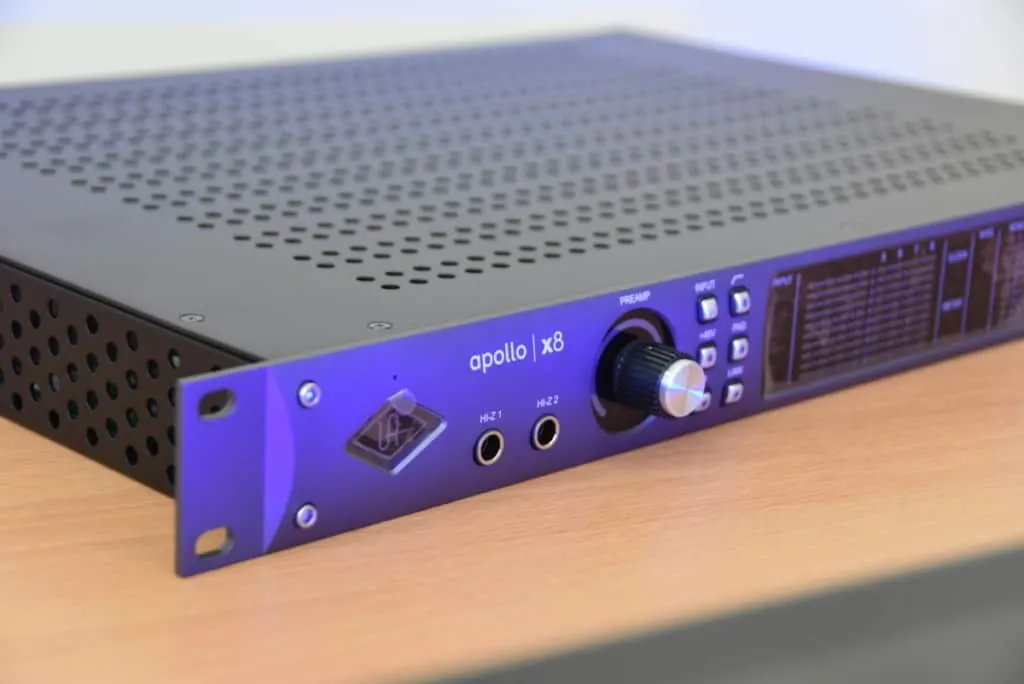
Let’s get straight into the wonderful realm of music production and recording. Let me tell you a funny anecdote; give you some real hardcore data and even some advice.
Are you ready? Let’s do this.
Ignorance Is Bliss (Don’t Skip This Step)
Let’s get started from the very beginning.
What do I mean by “ignorance is bliss”? Well, that our ear gets sharper as time goes by and we expose it to different qualities.
This is to say that if you have never worked with a really high-end piece of equipment, then your ears will not be able to tell the difference between one thing and the next.
For example, let’s say you got started on a cheaper audio interface like the Scarlett Solo (which is an excellent choice) or the M-Audio Fast Track and that is all you have ever worked with. You are not aware of the shortcomings they have in terms of audio.
Yes, we all hear multi-million-selling records made with a vintage valve Neumann into a Neve console, but not in the mixing process and that is a huge difference.
Ignorance is bliss as long as you are pursuing music production and recording as a hobby. If you want to get serious about recording, you have to start training your ears to unveil the audio illusion.
Check out the Scarlet Solo 2i2 here on Amazon.
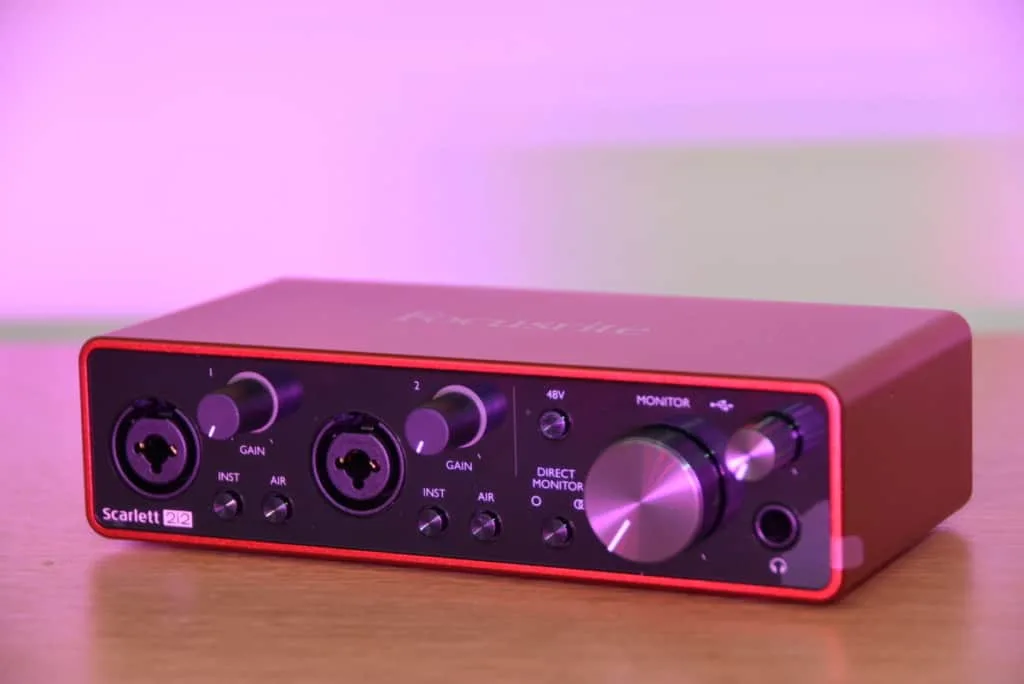
The Cheap Audio Interface Illusion
The audio illusion is something that I see very often in a lot of record producers and mixing engineers in the world. Bear with me a little here because this is very important when choosing an audio interface.
Let me break it down so you can understand it. The audio you hear from the speaker is the result of many variables because the sound is essentially air. The way that air interacts with your environment has an effect on the way you hear.
· Acoustic panels – This is the first example of the audio illusion. Has it ever happened to you that you have been mixing for several hours working on that low end to be perfect with various equalizers and then you put it into your headphones, and it is gone? Well, that is because your room is projecting a low frequency that is not there. This is an acoustic property of the place you are recording at. Acoustic panels can solve it. Get acoustic panels before changing your audio interface.
· Layers and equalization – Volume is a big part of the sound illusion. For example, the frequency that some instruments occupy is unique and hence you need to set their volumes really low. This could be the cymbals on a drum set. They are so high and bright that if you equalize them correctly, they won’t step on any other instrument. This means there is no fight going on in terms of volume. The more layers you put on a recording, the more things you have to accommodate in the frequency spectrum. This is what makes the volume illusion: things are not louder or quieter, they are hidden or exposed. Working equalization rather than volume is the solution. Work on this before you change your audio interface.
· Fatigue – Ears and brains get fatigued when we expose them too many hours in a row to extreme attention to detail. It is simply not possible to have 12 hours of straight attention and not degrade your listening capabilities. Take breaks every hour at least to go back to the saddle fresh and focused. Try this before changing the audio interface.
Why do I bring this up to start with? I do it because a cheap audio interface makes a difference as much as the above-mentioned factors do. It is pointless to upgrade your audio interface if you don’t change or improve these simple things first.
Here’s a great video that shows how to get started with the Scarlett Solo Audio Interface. This is a great audio interface to get started with.
The Correct Audio Interface At This Stage In Your Career
This is another major concern. If you are just starting out in the recording and mixing world, don’t upgrade your interface just yet; try to make the most out of what you have.
It’s not about the money, it’s about the learning curve. Try to make the most out of your Focusrite Scarlett Solo first. It is going to allow you to outgrow it and make the transition to a better audio a natural progression.
Perfect The Ear Before Upgrading Your Audio Interface
Because of the last item, I have to say this: your ear is your most precious asset in music production, recording, mixing, and mastering.
This ear does not come out of the blue. There are people who are naturally more talented than others, but this doesn’t mean you don’t have to put in the hours of work.
Take a look at my video on the Stampsound YouTube Channel for more information.
Please subscribe to the channel. It’s completely free!
You can subscribe to the channel here.
Upgrading your interface before it’s time to do so is like buying a $1000 wine when you are not a wine drinker or ordering an Argentinian steak at a restaurant when all you’ve ever eaten is burgers before.
There is a learning curve that will take you time to perfect your ear and appreciate the difference in the audio quality.
That Digital Sound (we all hate)
Speaking about the difference in the audio, let’s talk about what makes audio better or worse.
The theory behind audio interfaces is that they recreate the original audio waveform that is analog, with zeros and ones. The more they can process per second, the higher the quality of the audio will be, because it will employ more zeros and more ones closer together to make a better recreation.
When you zoom in to a digital waveform, there is a moment that your zoom tool stops working and that is the maximum number of zeros and ones your interface can take. If you are into photography, you can compare this with pixels: the higher the quality of the picture, the more you can zoom in without losing any quality. The same goes for audio.
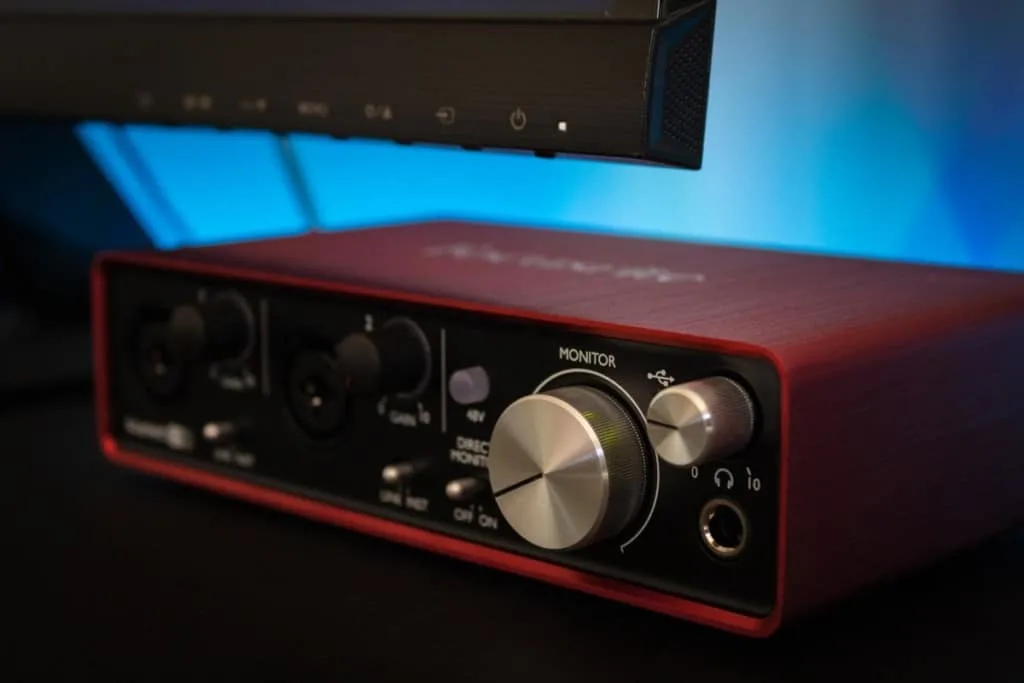
Let’s take a look at the three aspects that make that digital sound we all know and don’t like at all.
Warmth (the lack of)
Perhaps the most evident set of frequencies in digital audio is the lower ones.
To say it in another way, this is their Waterloo. In fact, the more you work in this business, the more you understand what makes tape so great.
The warmth is where the roundness and punch of music are at. Imagine records that you love without a good kick drum or without a punchy bass line. In fact, if you are into a very modern music style like dubstep, EDM, or techno, that low end that makes people dance is the warmth of really high-quality music production tools.
You can add an equalizer, compressor, and reverb to thicken the sound, but if the low frequencies are not a part of the spectrum your device can capture (which happens a lot with the cheapest ones) it will not be defined and punchy, but artificial and weak.
Audio Interface Sharpness & Clarity
While the low end gives you that warmth and punch, the mid and high frequencies are going to give your mix the sharpness and clarity it needs.
To put it in other words, a mix with a lot of warmth and no sharpness becomes muddy and loses clarity. Instruments like keyboards, guitars, vocals, and brass; they all need definition to sound good and cut through the mix.
The more detailed and faithful audio you can get from them, the more you can compress it to bring it to the front. Just like in photography or video, if the source is not optimal you can’t use a projector and a big screen to show it without losing definition, with audio is the same.
If you capture them with a poor bitrate and compress it really loud to cut through the mix, you’ll hear the shortcomings of the audio interface instead of sharpness and clarity. You’ll get to shout out loud just how little you invested in your studio’s heart and soul.
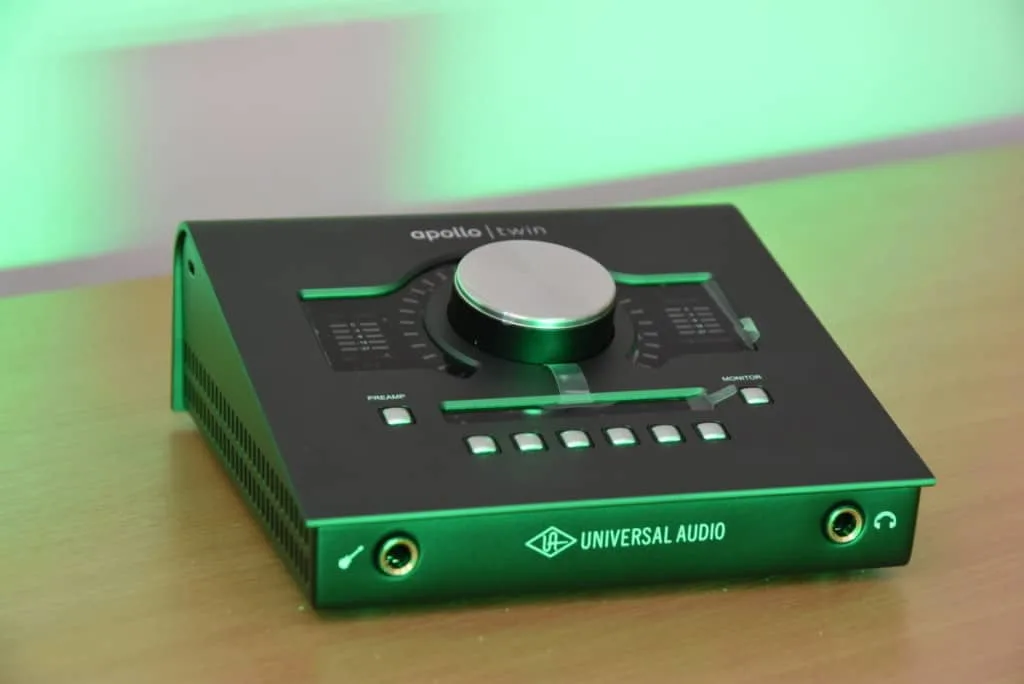
Is A More Expensive Audio Interface Better?
Let me begin this section by telling you a little anecdote.
I went to an audio school to get a degree in music production. As it was a paid school and not a cheap one, we had the opportunity to do hands-on work with some of the most expensive and marvelous equipment I ever used in my life.
I was not alone in the class, of course, there were fifteen of us. When graduation time came, we all made our investments and set out to work on our own studios. I had this companion called Jennifer who was the only daughter of a millionaire (literally) and could afford almost anything she wanted. You can imagine just how her “beginner’s” studio was equipped. She even bought FOSTEX 2” open tape recorders.
To make a long story short, the whole class met again after five years went by since graduation and I got into this conversation with Jennifer.
We all thought she was going to make the highest quality recordings of us all, but it turned out she sold half her studio and bought most of the things we initially did. Her big mistake was thinking that more expensive was better. Her ears and her studio chops were not up to the task yet of making the most out of that expensive equipment.
Expensive is not always better, it is only better when you can make the most out of it. Enjoying the learning curve and being mindful of it is the best advice anyone in the industry can give you. Grow your ears!
Here’s a good video that shows some of the more recent models of audio interface.
Audio Interface Inputs And Outputs vs Converters Quality
The world of expensive versus cheap divides into two big groups: more inputs versus higher-quality converters. This makes a huge difference depending on what endeavors you are going to pursue in your studio.
· More inputs – This is great for studios that need to record live bands, choirs, or any other multi-instrument situation. Having more inputs in your audio interface translates into more simultaneous separate channels it will provide to your DAW. Having, for example, a drum set with up to 12 microphones and another 4 channels to record the bass lines can give you the opportunity to equalize, compress and overall work with literally every piece separately in the mixing process. If you know what you are doing, the results are always better.
· Converters Quality – Let’s say that instead of having a live room to cut a band you decide you are going to do only voice-overs and hip-hop artists. You literally do not need 16 inputs but a very good-quality converter or maybe two. These genres utilize mostly vocals as the only analog instrument. I recently purchased and watched Timbaland’s Masterclass (if you don’t know who he is, Google him and have fun) and he bases everything, including hit Grammy-winning singles on a single mic and a computer. For some genres that’s all you need, so you can invest all your money in the quality of the converters.
What do big studios have? Well, they invest in both and have 24 or 32 premium quality converters attached to a Neve console feeding a state-of-the-art computer. They invest serious money to make serious money. If you have to choose one or the other to do your upgrade, you can follow the above advice.
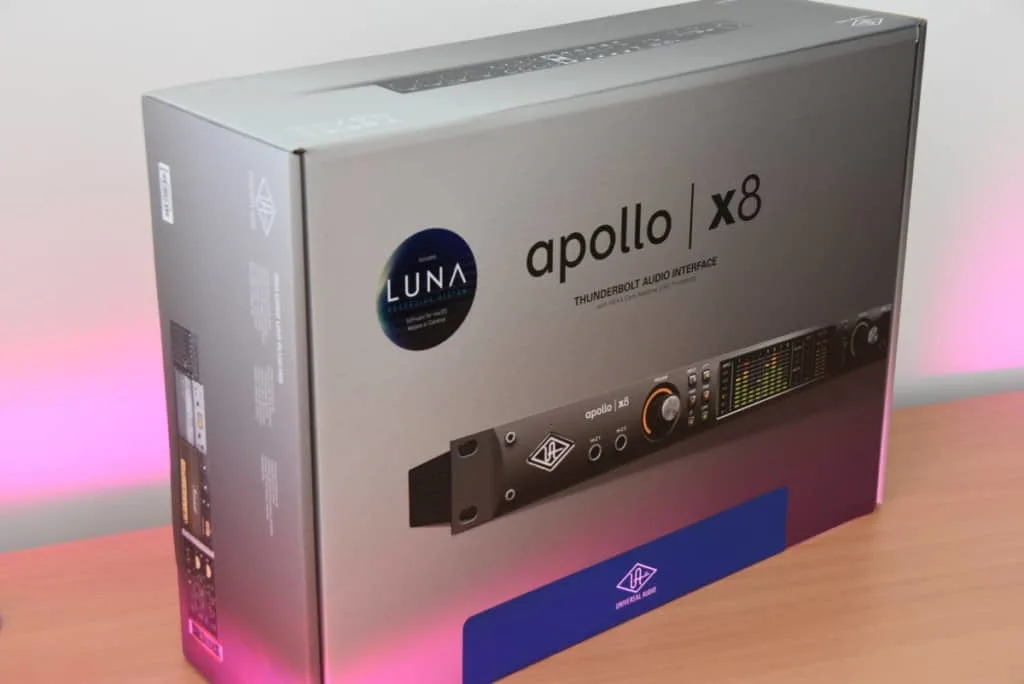
Old Vs New Audio Interfaces
This is another very common mistake that I see a lot, especially in newcomers: the good old line “if it ain´t broke don’t fix it?” does not apply to technology in music production.
Also, prices changed drastically from back in the day. When we talk about technology, the rules apply differently than in other areas. For example, when it comes to instruments, microphones, mixing consoles, open tape recorders and such, vintage is usually better sounding (and exponentially more expensive too).
On the other hand, the cheaper Scarlett Solo or Fast Track is ten times better than the state-of-the-art DIGI001 from back in 2002.
USB technology has gotten better and is now capable of transmitting way more information which translates into better quality sound. Always remember that the more zeros and ones it can generate, the closer the result will be to the real deal.
Take my word for it if you have never experienced it: nothing beats the low frequencies of recording drum and bass straight to tape. In fact, most of my band projects start in a friend’s studio who does everything old school and has an open tape recorder. We track drum and bass there and then I use the high-quality converters I bring over to translate it all to the DAW and move on to vocals, guitars, overdubs, and such in my own studio.
Here’s a really informative video that discusses whether or not upgrading an audio interface will enhance sound quality.
Audio Interface Connections
As much as I love moving around with my Mac Book Pro and my tiny USB Scarlett 2i2, this is not the setup at my studio. When you want to gather more information than a USB connection can take (with exceptions like the Prism Lyra), you need to invest in changing the connection itself. There are two viable alternatives:
· Thunderbolt – This is the latest technology developed by Mac for data transmission and it flies. It is much better than plugging USB and besides, you can easily expand to accommodate more than one thunderbolt piece of gear. To play in the bigger leagues for iOS users, thunderbolt is the way to go.
Both the Apollo Twin Duo and the Apollo X8 are high-class audio interfaces with Thunderbolt connectivity.
Take a look at the Apollo Twin Duo Here on Amazon
· PCIe – This technology works wonders for Windows users but has a very complex drawback: it can’t be external. The great thing about PCIe is that it attaches straight into your motherboard bypassing all other components that generate latency and degrade the signal. Although you can’t access all the technology out there, PCIe will make a lot of difference in your recordings. My friends who work on Windows platforms order their computers specifically to accommodate this technology and the results are awesome.
Best Audio Interface Models For The Money
Now that you know the answer to the question do audio interfaces make a difference and what kind of a difference that is; let’s take a look at which models you should be looking at.
I’m assuming you already started with something like most people in the range of under $200. Many people start with the Scarlett Solo as this technology. This is ten times better than anything available even 15 years ago. When the time comes to take the next step, it is important to know how to choose, and what to choose.
Let me present to you the candidates (red curtains open up, epic music playing in the background).
Best Audio Interface For Under $1000
Apollo Twin Duo
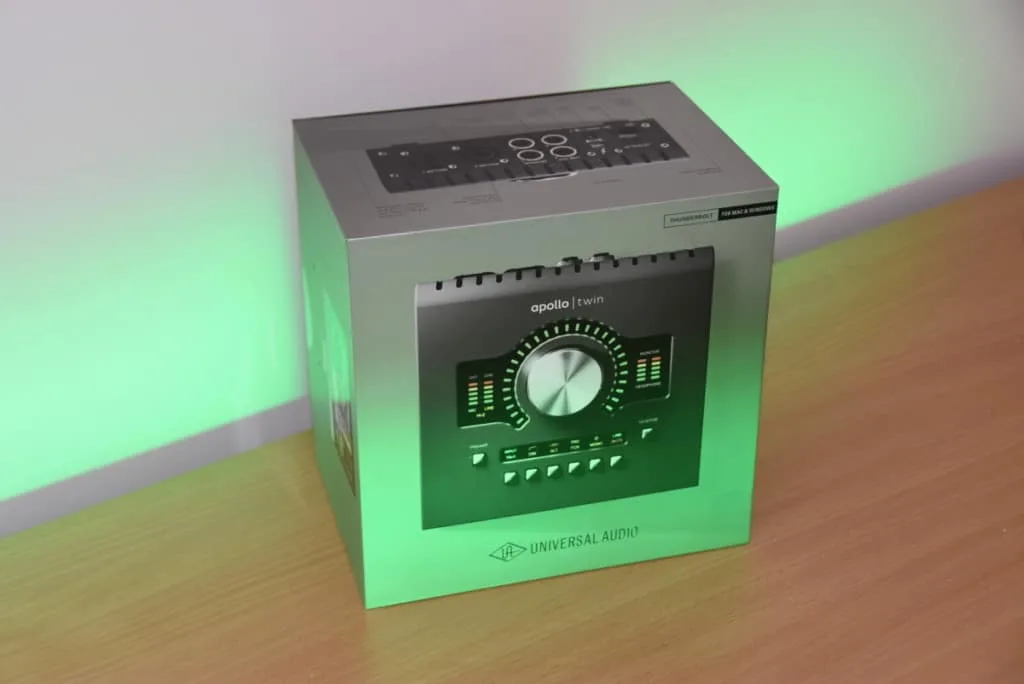

· Apollo Twin Duo – This is an amazing-sounding audio interface that will give those in the search for a dual input device the perfect solution in this budget.
Yes, it is a Thunderbolt-ready device with some of the best preamps in the industry.
The company that created the entire Apollo line (which is great) is called Universal Audio and if you hadn’t heard of them already, you need to check them out.
The looks are beautiful, it is practical, portable, and capable of 24-bit, 192Khz with a depth and a warmth you didn’t know was possible in the digital world. I love the way it sits on top of your desk, and you can plug everything into it.
The huge center knob is among the easiest to use in the market too. If your idea is to record vocals only or even just a couple of microphones at the same time this is definitely worth checking out.
Check out the incredible Apollo Twin Duo here on Amazon
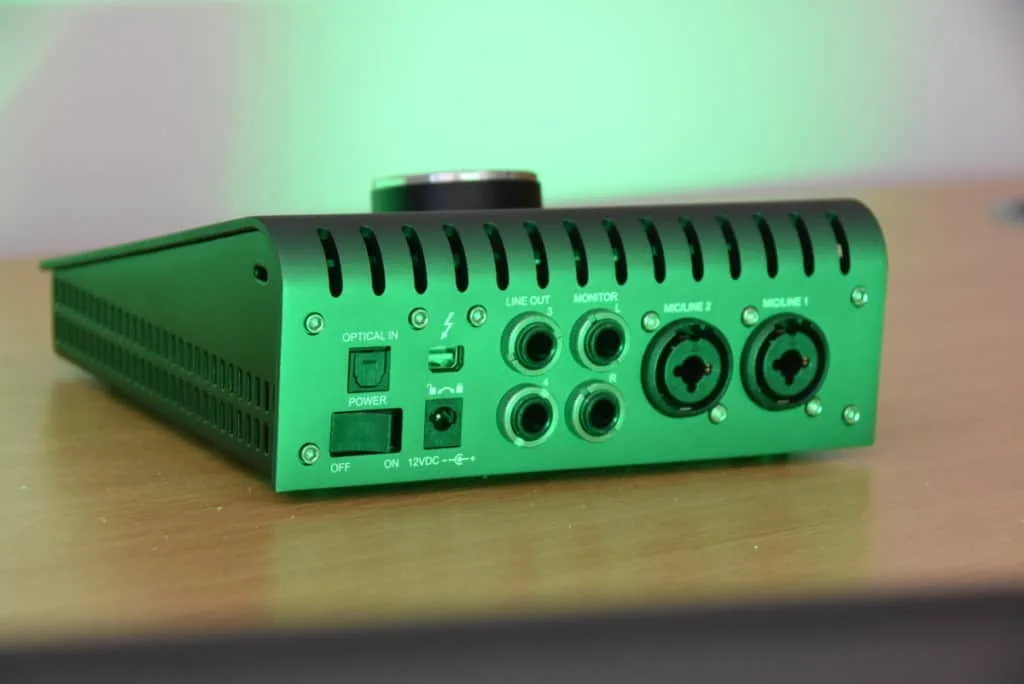
Take a look at the Apollo Twin Duo Here on Amazon
Also, check out this video of the Apollo Twin Duo.
· Focusrite Clarett 8Pre USB 18×20 – In the same price range as the above but for those who want to expand the number of channels at hand to cut drums or full bands of any kind, this Focusrite is just perfect.
Yes, it is USB but the way it is engineered, there is zero latency, and it holds up to the audio quality in every channel. It features eight preamps, one for each channel, and allows you to retain quality in every microphone you plug in without having to go to external preamps.
The front layout is completely neat and very self-explanatory. I love the fact that they included ten-line outputs, eight channels of ADAT, and a S/PDIF out to make more complex connections. If you are working in a band environment, you should definitely check this audio interface out.
Check out this Focusrite Clarett 8Pre product here.
Here’s a demonstration video of the Focusrite Clarett
Audio Interfaces Over $1000
· Prism Lyra – What if I tell you that this amazing device that can record up to 32 bits is USB? Well, the ultra-high quality Prism Lyra is actually a USB device with state-of-the-art technology capable of recording some of the clearest, punchiest, most beautiful sounding audio to your computer.
The company behind, if you have never heard of them is one of those super high-end brands that only those who really invest in audio get the privilege to hear. I was fortunate enough to work at many studios, especially for mixing and mastering that had one or two or even three of these beauties hidden behind the mixing console.
The sound is out of this world. I wouldn’t recommend skipping the previous stage to get to this one because your ears wouldn’t be able to appreciate it so much, but if you have already been there, this next step will blow your mind.
Here’s a look at the Prism audio interface
The Apollo X8 Is An Elite Class Audio Interface
Apollo X8 – Again, for those looking to get that extremely elite AD/DA converters (Analog to Digital, Digital to Analog) but in a package that can offer them more than a couple of channels, the Universal Audio Apollo X8 is one of the best options out there.
It is loaded with a Hexa-core, capable of processing using six cores at the same time and running many of the company’s own Neve plugins to make the recording and the mixing sound as amazing as it can humanly or better said, digitally be.
The company applied all the leverage of years of work and research to every detail of this modern wonder and if you have the money to go for it (respecting what I said above about not burning stages) you are guaranteed quality and amazing sound.
The Thunderbolt connection also allows you to stack several of them together to create that sound across the board.
I’ve been lucky enough to see them in action and I can tell you that the difference is nimble but that is what separates the highest elite-class studios from the home studios. Also, it is partially why an hour in a good quality studio is worth that much.
Take a look at the Apollo X8 here
Here’s a look at the Apollo x8 with Thunderbolt Interface
Take a look at the full details of the Apollo X8 Here Apollo x8

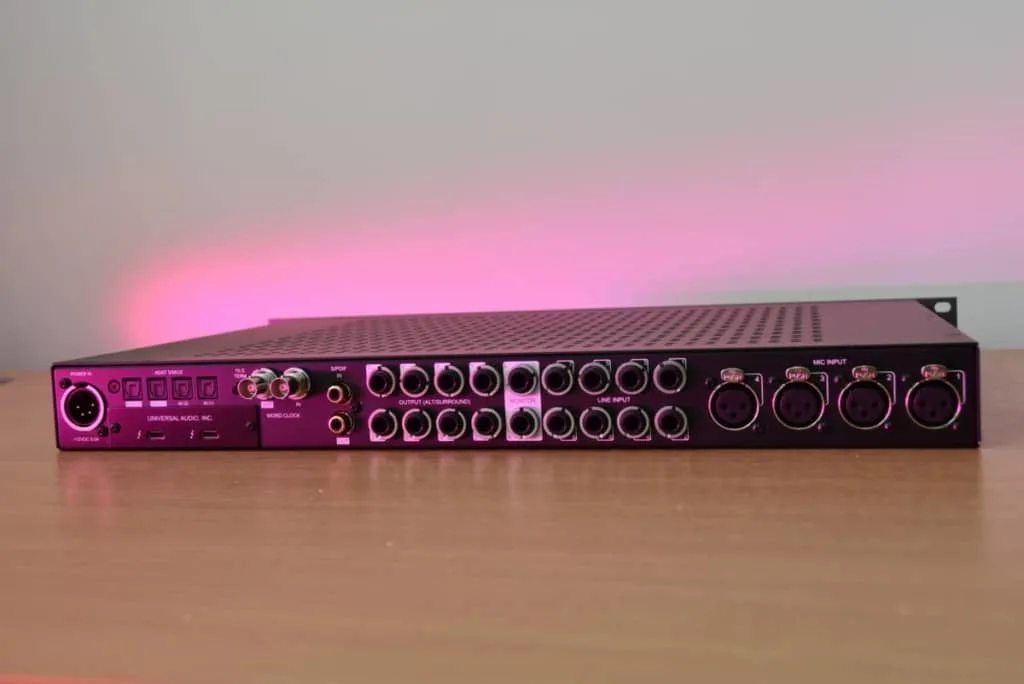
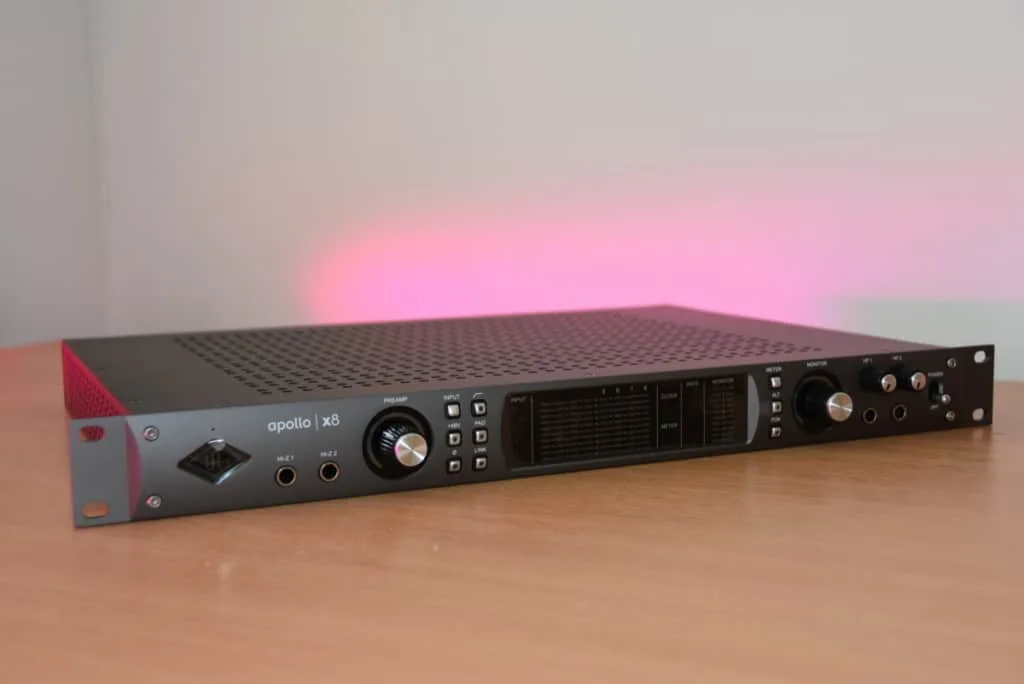
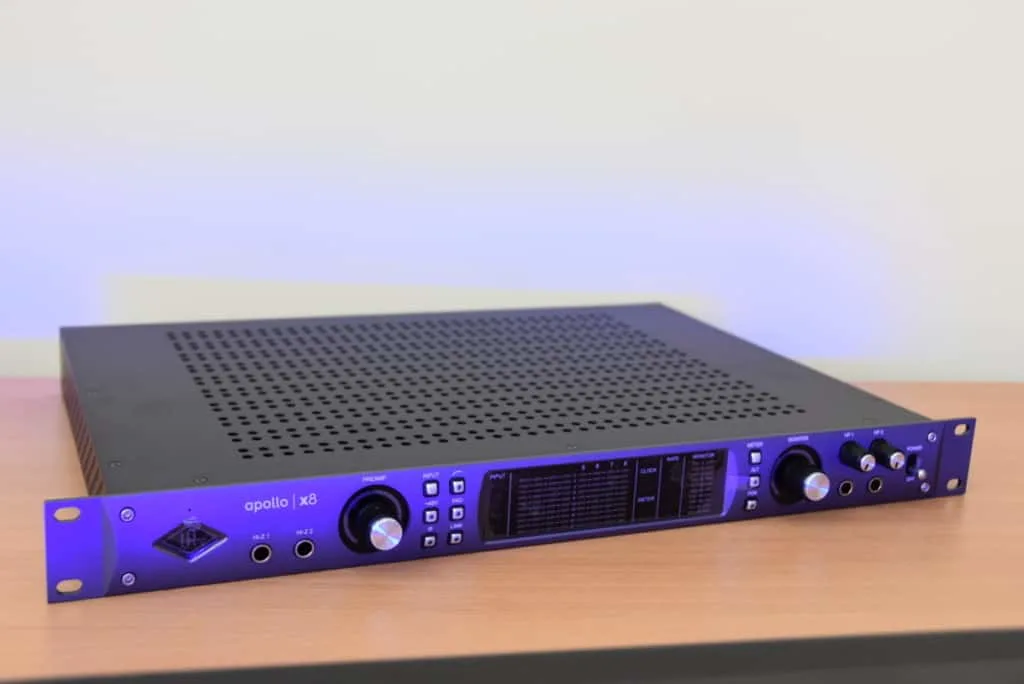
Take look at the full details of the Apollo X8 Here Apollo x8
Alternatives To Upgrading An Audio Interface
The audio interface you choose is your studio’s heart, soul, and guts but not the only thing contributing to the audio quality. Let’s take a look at what else you should be looking at; some of these come first in line before changing your audio interface.
Sources
By sources, I mean what you capture the sound with. Investing $800 in an Apollo Twin to capture vocals with a Samson C-01 is not the best idea. Before investing in a new interface, get yourself a good microphone.
Cables
The anonymous heroes, the forgotten patriots!
Most people really overlook the effect cables have on sound. We recently did a complete rewire of the studio’s mixing board to the live room and the difference in sound was drastic. Buy some decent cables and enjoy the difference whether you change the audio interface or not.
Preamp
Preamps change the equation in sound a lot. They apply color and beauty to the sound and can help you have a hotter signal coming in with more gain which will translate in better overall sound quality.
If you don’t already own a preamp, then get yourself one whether you change the audio interface or not (some come with very good factory ones).
I have written an article on recording vocals and preamps. You can read it here.
Compressor
Add a compressor to the equation before you reach the mixer or the audio interface. This will allow you to avoid peaks and the nuances of the voice and movements of the singers will not affect the volume of audio coming in.
There are some very good quality compressors out there, just find the one that suits you the best.
This Behringer compressor is a great place to start. Take a look at one here.
Conclusion – Audio Quality Is A Combined Effort
By now you should know the answer to the question “do audio interfaces make a difference?”
Changing the audio interface will change the core of your studio. We also went through why you should take that step and when. It is very important that your ear evolves as slowly as your gear, otherwise you might find yourself in my friend Jennifer’s situation and have to sell some equipment!
Also, bear in mind that as with all pieces of technology in the world, audio equipment does have an expiration date.
Better said, it is not an expiration date, but rather it will be obsolete with time, and you might have to make another investment. Invest wisely and that time will be stretched into decades, not years.
My final advice this time is to take it easy, the more you work in each stage of your career, the more leverage you’ll have when you reach the next. Music production is a beautiful and long road; try to enjoy it as much as you can.
Happy recording!
